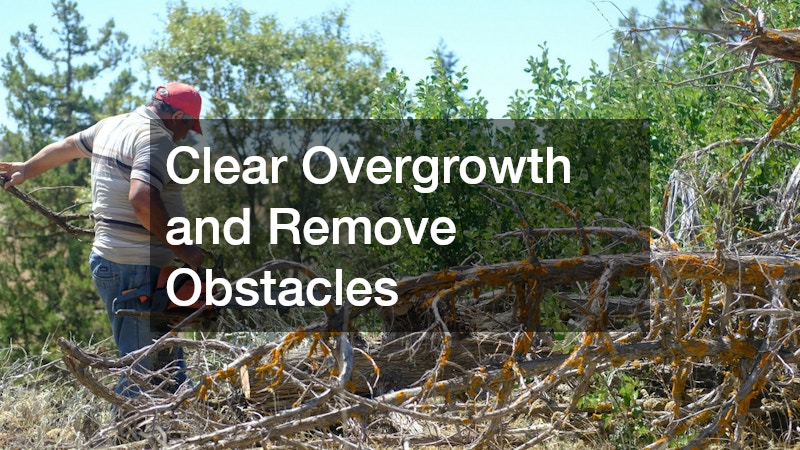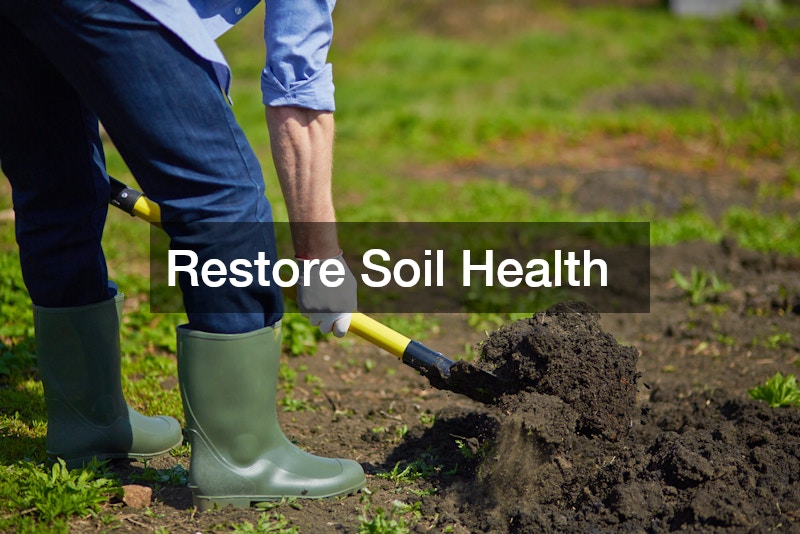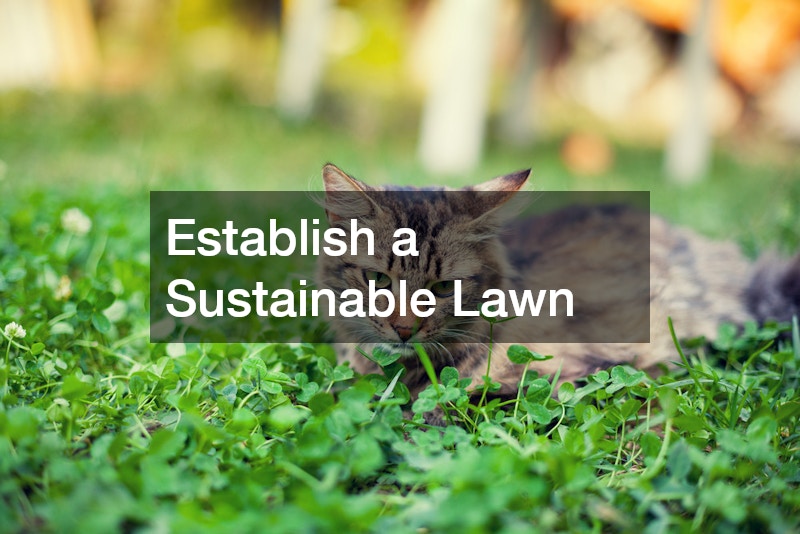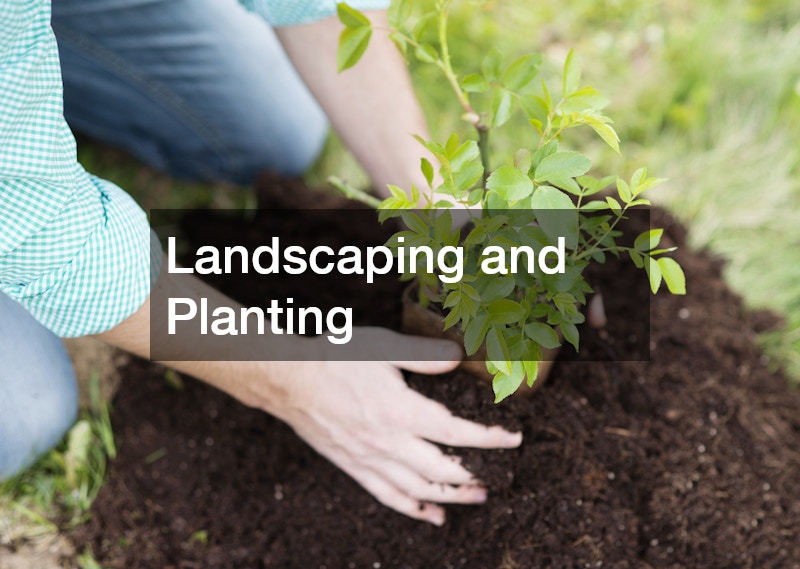Restoring your yard doesn’t have to be overwhelming. With thoughtful planning, sustainable practices, and the right approach, you can transform overgrown or neglected outdoor spaces into beautiful, functional areas that are eco-friendly and low-maintenance. Whether you’re dealing with overgrowth, old landscaping, or tired lawn areas, taking the process step by step ensures you achieve lasting results.
Sustainability is key to restoring your yard in a way that protects the environment while improving usability. This involves reducing waste, choosing eco-conscious solutions, and planning for long-term health of your soil, plants, and outdoor features. Restoring a yard sustainably also saves time and money in the long run, as healthy lawns and landscapes require less chemical intervention, water, and repairs.
This guide will walk you through actionable steps to reclaim and revitalise your yard, from clearing overgrowth to establishing vibrant outdoor living areas. With careful preparation, ongoing maintenance, and attention to both natural and designed elements, you can create a yard that’s as functional as it is beautiful.
Clear Overgrowth and Remove Obstacles

Once your plan is in place, the next step is to clear overgrowth and remove obstacles. This is crucial for safety, aesthetics, and preparing the soil for restoration. Overgrown vegetation can hide hazards, inhibit sunlight, and make it difficult to work efficiently.
Professional tree removals may be necessary if you have dead, diseased, or obstructive trees. Removing these safely not only opens up your yard but also allows for better airflow and sunlight, promoting healthier growth for remaining plants. Additionally, careful removal ensures minimal impact on surrounding vegetation and soil.
During this stage, it’s helpful to separate debris for reuse. Trimmings and smaller branches can be composted or chipped, while larger timber may be sold or repurposed. By handling overgrowth responsibly, you create a safe, functional foundation for the next stages of your yard restoration.
For dense brush or weeds, brush hogging can quickly clear large areas. This method is effective for reclaiming neglected land, creating clean lines, and preparing the area for sustainable landscaping. Brush hogging can also reduce fuel usage and environmental impact compared with more invasive clearing methods, aligning with eco-friendly goals.
Assess and Plan Your Space
Before lifting a shovel or starting any major work, it’s important to assess your yard thoroughly. Evaluate existing vegetation, soil conditions, drainage, and areas of concern. Consider which areas are overgrown or underutilised, and note where natural sunlight and shade fall throughout the day.
Part of planning involves prioritising tasks. For example, if there are hazardous or dying trees, hiring a tree service can address safety concerns and prepare the area for new planting. Clearing overgrown sections systematically ensures that later steps like landscaping or irrigation are easier to implement.
Sustainable planning also includes thinking about reuse and recycling. Fallen branches or trimmed materials can often be composted or turned into mulch rather than being discarded. If larger amounts of timber need to be removed, connecting with timber buyers can provide an eco-friendly option while also recovering value from the materials.
Finally, visualising the end result helps create a roadmap for the project. Consider how you want your outdoor space to feel—whether it’s a calm retreat, a vibrant garden, or an area for entertaining. Thoughtful planning reduces unnecessary work, prevents waste, and lays the foundation for a sustainable restoration.
Restore Soil Health

Healthy soil is the cornerstone of a sustainable yard. Once overgrowth is removed, evaluate soil composition, drainage, and fertility. Compacted soil may require aeration, while areas with poor nutrition benefit from organic amendments.
Incorporating natural compost, mulch, or green waste from cleared brush supports microbial activity, retains moisture, and reduces the need for chemical fertilizers. Using sustainable practices at this stage ensures plants establish strong root systems and thrive with minimal intervention.
If the yard requires grading or excavation for drainage or new plant beds, a professional excavating service can help prepare the land efficiently. Proper excavation ensures water flows correctly, prevents pooling, and supports healthy turf and garden areas. Thoughtful soil restoration is not just about aesthetics—it’s about creating a resilient foundation for long-term sustainability.
Additionally, consider which areas could benefit from erosion control, natural ground cover, or native plants. Planting species that are adapted to your region reduces water usage and maintenance, aligning with eco-friendly goals while enhancing the overall health and beauty of your yard.
Establish a Sustainable Lawn

A lush, healthy lawn can greatly enhance your yard’s overall appeal and usability, serving as both a visual centerpiece and a functional outdoor area. The first step is preparing the soil properly, which may include aeration, adding organic amendments, and correcting drainage issues. Selecting grass species suited to your local climate and soil type is equally important. Sustainable lawns often incorporate drought-resistant or native grasses, which require less water and fertilizer while thriving naturally in the environment. Choosing the right grass not only reduces maintenance but also supports a more resilient and environmentally friendly landscape.
A well-rounded lawn care routine helps maintain soil health and keeps your grass vibrant year-round. Organic fertilization nourishes the lawn without relying on harsh chemicals, while proper mowing practices encourage strong growth and reduce weed competition. Aeration improves water and nutrient absorption, prevents soil compaction, and promotes deeper root development. By adopting these methods consistently, you create a resilient lawn that is less prone to disease, drought, or other stressors.
Sustainable lawn maintenance also requires planning for seasonal changes. Overseeding during cooler months helps repair thinning areas and maintain even coverage. Applying mulch in targeted areas retains soil moisture, moderates temperature, and adds organic matter to the soil. Regularly monitoring soil and grass health allows you to spot early signs of stress or pest issues, which can then be addressed with natural or eco-friendly solutions. Integrating techniques like companion planting, biological pest control, or manual weeding further reduces environmental impact while supporting overall ecosystem health.
Upgrade Outdoor Living Spaces
Once your yard is cleared and the lawn is well-established, the next step is to focus on creating inviting outdoor living spaces. Thoughtful design is key—it maximises usability while remaining aligned with sustainable and eco-conscious practices. Choosing permeable materials for walkways or patios allows rainwater to naturally soak into the ground, reducing runoff and supporting healthy soil. Incorporating recycled or locally sourced products, along with native plants, further reduces environmental impact while blending seamlessly with your existing landscape. These design choices make your yard functional, attractive, and environmentally responsible.
When planning outdoor living areas, consider how different features can enhance both comfort and aesthetics. Seating areas, fire pits, patios, or pergolas can be strategically placed to complement the natural contours of your yard. Incorporating natural shade from existing trees or installing shade structures reduces heat exposure during warmer months, making your outdoor areas more enjoyable while protecting grass and plants from excessive sun. Thoughtful placement of these elements also helps prevent soil erosion and protects delicate plant beds, ensuring that your landscape remains healthy and sustainable over time.
Functional outdoor living spaces encourage connection with nature and make your yard more versatile. Areas designed for entertaining, family activities, or quiet relaxation provide multiple opportunities to enjoy your outdoor environment. By carefully selecting sustainable materials, you ensure that these spaces serve practical purposes without compromising your eco-friendly yard restoration goals. Integrating elements like low-maintenance plantings, natural seating, and eco-conscious features enhances both usability and visual appeal.
Landscaping and Planting

A well-planned yard requires strategic planting. Hiring a professional landscaping service can help select plants that thrive in your environment, reduce water consumption, and maintain biodiversity. Proper placement of shrubs, trees, and flower beds ensures long-term growth and sustainability.
Consider integrating native species that attract pollinators and support local wildlife. Mulching around plants conserves water, moderates soil temperature, and reduces weeds naturally. Sustainable landscaping practices promote soil health, prevent runoff, and create aesthetically pleasing outdoor spaces.
Spacing plants appropriately and grouping them by water needs supports efficient irrigation and reduces overall maintenance. Thoughtful landscaping transforms your yard into a resilient, low-maintenance ecosystem while enhancing visual appeal.
Irrigation and Water Management
Efficient water management is a cornerstone of sustainable yard restoration. Properly delivered water not only supports healthy plant growth but also conserves a vital natural resource. Partnering with an experienced irrigation company ensures that your yard receives the right amount of water exactly where it’s needed, reducing waste and promoting the long-term vitality of your lawn, flower beds, and outdoor plantings. Professional guidance also helps identify problem areas, such as sections of the yard that are prone to water pooling or dry spots, allowing for precise solutions that improve overall efficiency.
Modern irrigation systems offer a range of features designed to conserve water while maintaining plant health. Drip lines deliver water directly to the root zone, minimizing evaporation and runoff. Smart controllers adjust watering schedules based on rainfall, temperature, and soil moisture levels, helping you use only what your yard requires. Targeted zones allow different areas of your yard to receive customized water levels, ensuring that lawns, gardens, and ornamental plants each get the right amount. Regular inspection and maintenance of these systems prevent leaks, overwatering, and soil erosion, all of which can compromise both sustainability and plant health.
Proper irrigation extends beyond water delivery—it directly impacts the longevity of your plants and the overall health of your landscape. When water is applied efficiently, plants are less stressed and more resistant to pests and disease, reducing the need for chemical treatments. By tailoring irrigation to plant types, soil conditions, and seasonal requirements, you create a balanced ecosystem that thrives naturally.
Ongoing Maintenance and Supplies
Sustainable yard restoration doesn’t end once the major work is completed—it requires ongoing care and attention. Having access to high-quality lawn and garden supplies ensures you can maintain plants, soil, and outdoor features effectively without relying on harmful chemicals. Tools like organic fertilizers, compost, and mulch not only help preserve soil health but also support plant growth and keep your yard looking vibrant throughout the seasons. By using these eco-conscious products consistently, you reduce the risk of over-fertilization, chemical runoff, and other issues that can negatively impact your yard and the surrounding environment.
Routine maintenance is key to preventing small problems from becoming larger, costly issues. Regular tasks such as pruning, fertilization, and pest management help ensure that plants remain healthy and strong, while maintaining proper spacing and airflow reduces the likelihood of disease. Combining these practices with frequent inspections of irrigation systems, outdoor living areas, and landscaped sections allows you to catch potential issues early and maintain a safe, functional, and visually appealing yard.
Consistency is perhaps the most important aspect of sustainable yard care. By following a regular schedule, you can respond promptly to seasonal changes, monitor plant growth, and address potential hazards such as erosion, water stress, or pest infestations. Investing time and effort in eco-friendly maintenance practices not only preserves the beauty of your outdoor space but also supports the long-term health of your lawn, garden beds, and outdoor structures. Over time, this proactive approach ensures your yard remains a thriving, productive, and enjoyable space year-round, providing both aesthetic pleasure and environmental benefits for you and your community.
Enjoy Your Restored Yard
After all the hard work, your yard transforms into a sustainable, functional, and visually appealing space. Every corner reflects the effort you’ve put into clearing overgrowth, restoring soil health, and carefully planning landscaping. Whether you’re hosting gatherings, relaxing in shaded outdoor living areas, or simply enjoying the feel of a lush, healthy lawn underfoot, the rewards of thoughtful restoration are immediately noticeable. Beyond looks, your yard becomes a space that encourages outdoor activity, fosters connection with nature, and supports a more eco-conscious lifestyle.
Taking the time to restore your yard responsibly does more than improve its aesthetics—it has a lasting positive impact on the environment. By using sustainable practices, minimizing waste, and selecting native or resilient plants, you create a yard that supports biodiversity, conserves water, and reduces reliance on chemical treatments. Regular maintenance, along with support from professional services when needed, ensures that each element—from lawns and flower beds to irrigation systems—remains healthy and thriving.
Over time, your yard becomes not only a place of beauty and recreation but also a model of environmental stewardship. The choices you make during restoration—whether in soil care, plant selection, or landscaping design—contribute to long-term sustainability. With consistent care, your yard continues to provide enjoyment, functionality, and ecological benefits, allowing you to fully appreciate the value of a space that is as resilient and productive as it is inviting.

